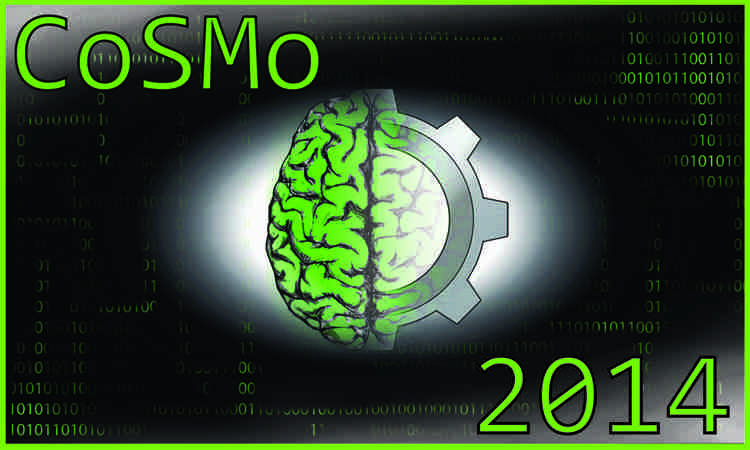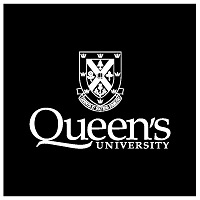Difference between revisions of "CoSMo 2014"
(→The Bayesian Brain) |
|||
| Line 131: | Line 131: | ||
'''Afternoon tutorials 1''' <br> | '''Afternoon tutorials 1''' <br> | ||
| − | [[Media:Cosmo2014SchraterDay1.zip | Tutorial files]] (instructions inside the *.m files) <br> | + | [[Media:Cosmo2014SchraterDay1.zip | Tutorial files]] (instructions inside the *.m files) <br>he |
| + | There are 3 problems to work on today. | ||
| + | "Problem 1" | ||
| + | In the first, start with AttractProjectGoals.m. This file has two other files, face imanalysis.mat and faceimgui.m | ||
| + | The project explores the question "Where do cues come from?" in cue combination. Normally there are clever | ||
| + | guesses by experimenters, but in less studied domains little is known about the information subjects use to infer | ||
| + | properties. In this project we treat a toy version of a real problem - what are the cues to facial attractiveness? | ||
| + | Here I have taken a database of images together with 1-10 rating scale attractiveness ratings, and done an initial | ||
| + | unsupervised dimensionality reduction of the images. Your job is to characterize the cues to attractiveness ratings given | ||
| + | the low dimensional image representation via a simple data analysis. Each dimension is a potential cue to attractiveness. | ||
| + | Your goal is to characterize P(cue_j|attractiveness). Use the faceimgui to interactively view the relationship | ||
| + | between the cues and the face images. Load the face images use the faceimananalysis.mat file. | ||
| + | |||
| + | Then the challenge is to remove the cue independence assumptions and do the analysis again. The second part will require you to estimate the joint probability of the cues P(cue1,cue2,cue3,...|attractiveness). One possibility is to assume multivariate gaussian. | ||
| + | |||
| + | "Problem 2" | ||
| + | In the second problem, you will work through the explaining away model described in the class for image size and touch. The instructions are in the ExplainingAway.m file. | ||
== Computational neuroscience in industry == | == Computational neuroscience in industry == | ||
Revision as of 18:57, 13 August 2014
This page contains course materials for the CoSMo 2014 summer school.
Contents
- 1 Introduction - overview of sensory-motor control
- 2 DREAM database - Introduction to the data and model sharing initiative
- 3 Motor control & learning
- 4 Sensory-motor transformations
- 5 Prosthetics
- 6 The Bayesian Brain
- 7 Computational neuroscience in industry
- 8 Final Project Presentations - Aug 15, 4:30-5:30pm and 7-11pm
Introduction - overview of sensory-motor control
Aug 4-5
Lecturers: Gunnar Blohm, Kurt Thoroughman, Paul Schrater
Thoroughman slides 1
Thoroughman slides 2
Thoroughman notes
Blohm slides part 1
Thoroughman notes
Thoroughman slides 1
Thoroughman slides 2
Thoroughman slides 3
Thoroughman slides 4
Blohm slides part 2
Thoroughman - Interpreting imaging studies
How to model
Afternoon tutorials
Do Iterations, Fibonacci Numbers and Matrices in Moler's Matlab tutorial
Reproduce figure 1 from Pouget & Snyder paper: an example Matlab code
Bayesian tutorial and related Data set
Light bulb tutorial and related data set. Feel free to also consult Dayan & Abbott chapter 3
A solution for the light bulb tutorial...
Additional documents
Poggio & Bizzi 2004 paper
Eve Marder's viewpoint on modelling
Jimenez, Heliot and Carmena 2009
Hsiao, Fettiplace and Darbandi 2011
DREAM database - Introduction to the data and model sharing initiative
Aug 4 (evening)
Lecturer: Gunnar Blohm
You can get the DREAM project from Gunnar on a USB drive. DREAM can also be downloaded piece-wise (data sets, models, tools, and documentation) from CRCNS: http://crcns.org/data-sets/movements/dream/downloading-dream. You will need to create an account on CRCNS to be able to download the project files.
If you want "all" of DREAM (models, tools, and documentation), click here: AllDream.zip
- If you're familiar with svn and would like info/credentials for code in the repository, contact Ben Walker
Here's the latest version of LoadDreamPaths.m. (This script should work for all OSes.)
Here is a description of data sets currently in Dream. Dream is growing, but this list is accurate as of the time of the summer school (click on the link to access the related publication).
- Burns -- reaching with head tilt and left/right visual perturbations
- Corbett -- reach trajectory predictions based on EMG and gaze movements
- Fernandes -- reaching with uncertain and rotated midpoint feedback
- Flint -- decoding of reaching movements from local field potentials
- Kording -- reaching with uncertain midpoint feedback
- Mattar 07 -- generalizing from one, two or multi targets to another direction
- Mattar 10 -- reaching to a distance (short/long), generalizing to the other one (long/short)
- Ostry -- move in force field, get an estimation of where the hand is
- Scott -- monkey (no spike), center out: even and not evenly distributed targets, also a forward/back
- Stevenson -- center out, monkey with neural time stamps
- Thoroughman -- reach adaptation to perturbations with different complexity
- Vahdat -- movement in force field with FMRI scans pre/post learning
- Wei 08 -- visual perturbations, cursor shown only at target
- Wei 10 -- movement in differing force fields
- Young -- movement time stayed the same, but distance changed; fast, medium, slow reaches.
Motor control & learning
Aug 6-7
Lecturers: Reza Shadmehr, Adrian Haith, Alaa Ahmed
Haith lecture
Ahmed lecture
Reza's slides cannot be posted due to copyright/embargo rules. If you would like a copy of them, please ask Gunnar.
Afternoon tutorial 1
Instructions
Saccade code
Afternoon tutorial 2
Kalman filter assignment
Sensory-motor transformations
Aug 8-9
Lecturers: Andrea Green and Paul Cisek
Afternoon tutorials 1
Tutorial files
Afternoon tutorials 2
Tutorial instructions and Matlab code
Prosthetics
Aug 11-12
Lecturers: Jon Sensinger and Levi Hargrove
Hargrove lecture 1
Hargrove lecture 2
Afternoon tutorial 1
Tutorial files
Afternoon 2 tutorials
Tutorial instructions and code
RIC data set: ask Levi Hargrove
Ninapro data
The Bayesian Brain
Aug 13-14
Lecturers: Adam Johnson, Paul Schrater
Afternoon tutorials 1
Tutorial files (instructions inside the *.m files)
he
There are 3 problems to work on today.
"Problem 1" In the first, start with AttractProjectGoals.m. This file has two other files, face imanalysis.mat and faceimgui.m The project explores the question "Where do cues come from?" in cue combination. Normally there are clever guesses by experimenters, but in less studied domains little is known about the information subjects use to infer properties. In this project we treat a toy version of a real problem - what are the cues to facial attractiveness? Here I have taken a database of images together with 1-10 rating scale attractiveness ratings, and done an initial unsupervised dimensionality reduction of the images. Your job is to characterize the cues to attractiveness ratings given the low dimensional image representation via a simple data analysis. Each dimension is a potential cue to attractiveness. Your goal is to characterize P(cue_j|attractiveness). Use the faceimgui to interactively view the relationship between the cues and the face images. Load the face images use the faceimananalysis.mat file.
Then the challenge is to remove the cue independence assumptions and do the analysis again. The second part will require you to estimate the joint probability of the cues P(cue1,cue2,cue3,...|attractiveness). One possibility is to assume multivariate gaussian.
"Problem 2" In the second problem, you will work through the explaining away model described in the class for image size and touch. The instructions are in the ExplainingAway.m file.
Computational neuroscience in industry
Aug 14, 4pm
Lecturers: Dani Siddharth, Rahul Gupta, Jadin Jackson, Ashutosh Chaturvedi (Medtronic)
Final Project Presentations - Aug 15, 4:30-5:30pm and 7-11pm
Presentation schedule
4:30pm - The Kalman touch
Predicting force with expectation: a haptic softness task
Group: Alexandra Lezkan, Elisabeth Rounis, Stefanie Mueller, Simone Toma, Ali Borji
5:00pm - Rolling heads
Multisensory integration in the perception of verticality
Group: Jorge Otero-Millan, Shany Grossman, Parisa Abedi, Anouk de Brouwer
5:30pm - 7:00pm - dinner break
7:00pm - Arousing Decisions
Group: Taraz, Windy, Dominic, Giuseppe, Giovanni
7:30pm - Triple Threat a.k.a. The SuperModel(ers) a.k.a. The CoSMo-nauts
Group: Reva Johnson, Amit Shah, Sean Barton, Chad Heley, Xing Chen
8:00pm - Tic Toc Pong
Adaptation to Delay while Playing Pong: Time or State Representation?
Group: Romy Bakker, Jemina Fasola, Guy Avraham, Raz Leib
8:30pm - Group X
The Effects of Motor Behaviors on the Temporal Ventriloquist Aftereffect
Group: Jacob Matthews, Brian Odegaard, Meytar Zemer
9:00pm - Learning to walk
Group: Emily Lawrence, General Lee, Gelsy Torres-Oviedo
9:30pm - Followers of Titipat
Group: Titipat A., Vynn H., Carly S., Pablo I.
10:00pm - On Fire
Two Balls: The Mapping of Arbitrary Multimodal Stimuli
Group: Chin-Hsuan Lin, Michael Olshansky, and Salvatore Fara
10:30pm - HuStLa’z
There and Back Again: Vestibular Adaptation in Outer Space
Group: Josh Cashaback, Ethan Oblak, Melodie Tian, Qianli Yang
Please rate project presentations HERE

